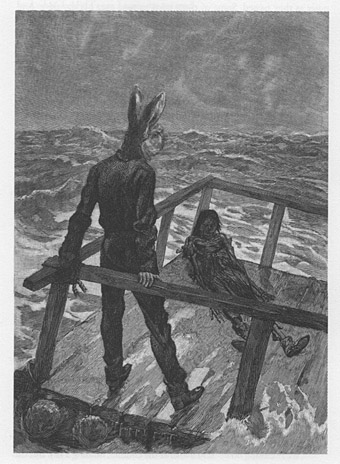RIP Duggie Fields, seen here in 1975 courtesy of Derek Jarman’s Super-8 camera. The occasion was an exhibition at the Kinsman-Morrison Gallery of Fields’ paintings, many of which are seen throughout the film, although the low light and poor quality of Super-8 stock doesn’t do them any favours. Fields and Jarman were both constituents of the mid-70s London art crowd known as “Them” so it’s no surprise to see other Them faces at the gallery, notably Andrew Logan interviewing all the attendees (the film is silent, unfortunately), and an insistently bare-breasted Nell Campbell, aka Little Nell, either just before or just after her appearance in The Rocky Horror Picture Show. This wasn’t the first or last time that Fields and Campbell had appeared before Jarman’s roaming lens, they’re both in an earlier Super-8 short, Ulla’s Fete, and in also Jubilee, while Fields may be found reclining in a toga during the opening scene of Sebastiane. For a better look at Fields’ paintings, plus some comment from the man himself, there’s this recent visit to his Earl’s Court studio.
Tag: Andrew Logan
Weekend links 503
Rabbit Man with Skull Lady (1998) by Allan Kausch.
• “They were the first generation that said, ‘Fuck it, we’re not going to be intimidated.’ They weren’t going to make specifically pro-gay statements, but they were the first generation to really live that out. If you look at the Alternative Miss World, it’s a kind of gender-fuck, it’s almost like the English version of the Cockettes.” Jon Savage speaking in a piece by Alex Petridis about “Them” (Kevin Whitney, Luciana Martinez de la Rosa, Duggie Fields, Derek Jarman, Zandra Rhodes, Andrew Logan et al). Related: Andrew Logan in Andrew’s Adventures in Loganland.
• Sex, Satanism, Manson, Murder, and LSD: Kenneth Anger tells his tale. “Anger rarely if ever veers from the script as he is a man who has carefully controlled his myth and reputation for decades,” says Paul Gallagher.
• “Don’t even think about operating heavy machinery while listening to this mix.” The latest Dave Maier collection of recent ambient drift, drone-works and beatless atmospherics.
It is by no means easy to track or trace relationships between women, past or present. Women’s relationships with other women are often disguised: by well-documented marriages to men, by a cultural refusal to see what is in full view or even to believe such relationships exist. In a world built by and for men and their pursuits, a woman who loves women does not register—and is not registered, i.e., written down. Reasons for this layer one upon the other: A lesbian purposely hides her identity and remains closeted. A lesbian refuses to call herself a lesbian, disidentifying from the term and its associations for reasons personal or political. A woman does not know she is a lesbian—because she does not ever have a relationship with another woman, or because she is not aware that the relationships she engages in could be called lesbian. I didn’t call myself one for several years. Or, as in Carson’s case, her own self-understanding and identification are difficult to determine because of the efforts of those who outlived her and pushed her into the closet.
Jenn Shapland on the closeting of Carson McCullers
• At The Paris Review: The Collages of Max Ernst. Related: Kolaj: A directory of collage books.
• Adam Scovell on the deathly hinterlands of Georges Franju’s Eyes without a Face.
• When Dorothy Parker got fired from Vanity Fair, by Jonathan Goldman.
• At Dennis Cooper’s: The Proto-Psychedelic Art of CG Jung’s Red Book.
• The abstract, single-stroke paintings of Daigoro Yonekura.
• Adam Gopnik on the seriousness of George Steiner.
• The Ballad Of Dorothy Parker (1987) by Prince | Lotus Collage (1979) by Laraaji | Death Collage (1992) by Snakefinger & The Residents


